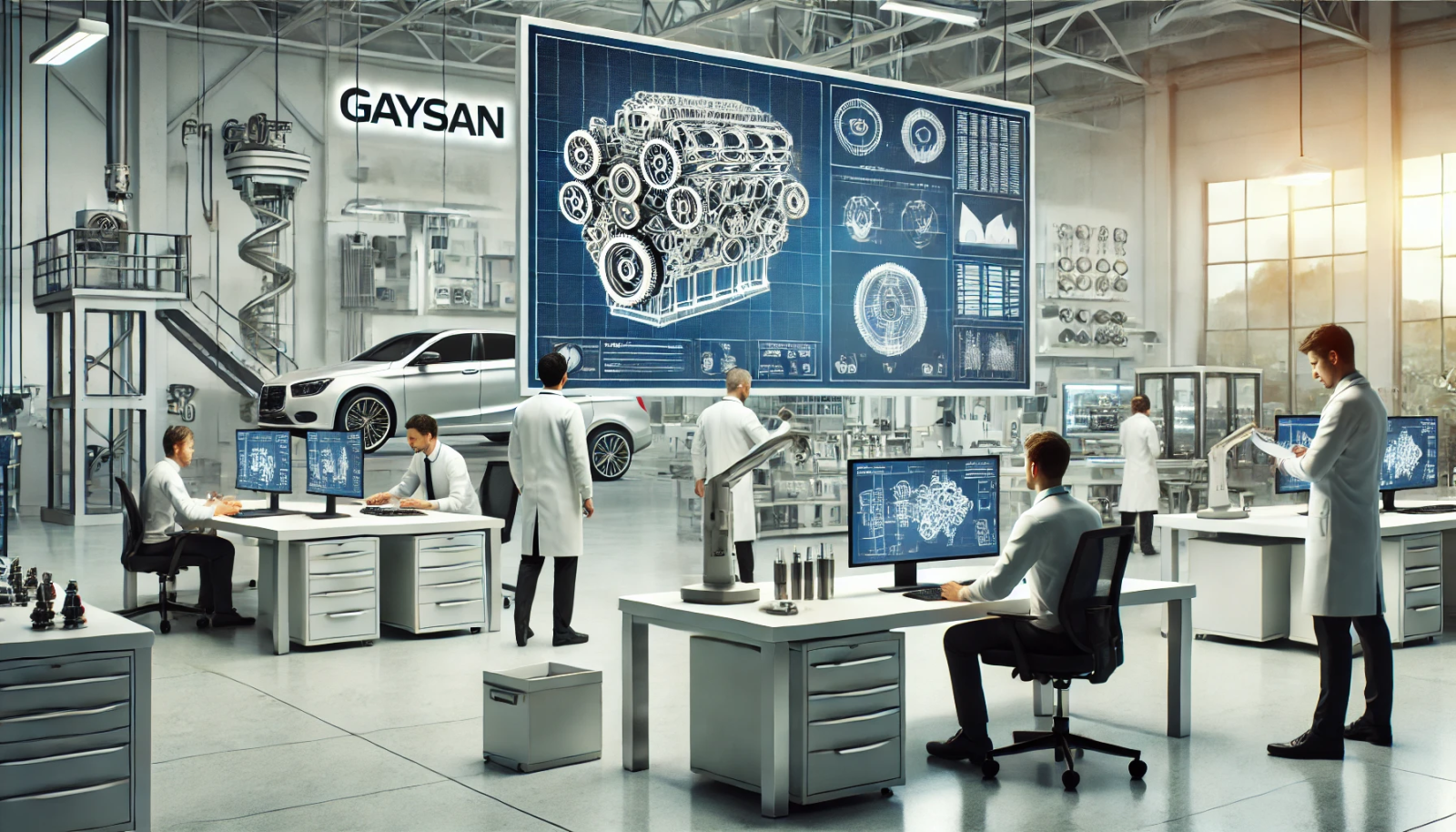

GAYSAN, Yeni Nesil Üretim Tesisini Hizmete Açtı!
GAYSAN, Konya’daki yeni üretim tesisini gururla duyurdu. 10.000 m²’lik bu modern tesis, son...
Haber Oku
OEM kod arama özelliği ile ihtiyacınız olan ürüne hızlı ve kolay bir şekilde ulaşabilirsiniz. Kodunuzu girin, aradığınız ürünü hemen bulun ve en uygun çözümlere anında erişin. Zamandan tasarruf edin, doğru parçayı zahmetsizce keşfedin!
GAYSAN markası altında, her türlü yakıt kullanan motorlar (Benzin, Dizel, LPG, CNG) için valf gayd, motor valfi ve valf seat üretimi gerçekleştiren firmamız, 1979 yılında Konya’da, 1000 m² alan üzerine kurulmuştur. Kuruluşundan bu yana, kalite odaklı yaklaşımıyla kısa sürede sektörde kendine güçlü bir yer edinmiştir. Motor supabı, gayd ve baga üretimiyle otomotiv sektörüne yönelik faaliyetlerimizi başarıyla sürdürmekteyiz. Müşteri desteğinden aldığı güçle başarı grafiğini sürekli yükselten firmamız, son teknoloji makineler ve tecrübeli teknik personel ile ürün yelpazesini her geçen gün genişletmektedir. Kalite kontrol birimimizde kullanılan ileri teknoloji cihazlar sayesinde ürünlerimiz düzenli olarak denetlenmekte ve %100 müşteri memnuniyeti hedeflenmektedir.


Her türlü araç modeline uygun, yüksek performanslı ve dayanıklı fren parçalarıyla güvenliğinizi sağlıyoruz.
Yüksek kaliteli fren parçalarımızla, aracınızın performansını ve güvenliğini en üst düzeye taşıyoruz. Çünkü güven, yolda başlar!
Firmamız, yüksek kalite standartları ve güvenilir üretim anlayışıyla sektörde fark yaratmaktadır. Yenilikçi teknolojiler ve güçlü Ar-Ge çalışmalarımızla müşterilerimize modern çözümler sunuyoruz. Müşteri memnuniyetini her zaman öncelik kabul eden yaklaşımımızla, ihtiyaçlarınıza özel hizmetler sağlıyoruz. 1979 yılından bu yana edindiğimiz sektörel tecrübemizle, farklı alanlarda başarılı projelere imza atmaya devam ediyoruz.
Her bir ürünümüz, en yüksek kalite standartlarına uygun olarak üretilmektedir. Üretim süreçlerimizde son teknoloji cihazlar ve uzman ekiplerle çalışarak, müşterilerimize güvenilir ve dayanıklı çözümler sunuyoruz. Ürünlerimiz, uzun ömürlü performansıyla sektörde fark yaratmaktadır.
Modern üretim tesislerimiz ve güçlü Ar-Ge ekibimiz sayesinde, sürekli olarak yeni teknolojiler geliştiriyor ve ürün yelpazemizi genişletiyoruz. İleri düzey analiz ve kalite kontrol süreçlerimizle, her bir ürünümüzün dünya standartlarında olduğundan emin oluyoruz.
Müşteri memnuniyeti, işimizin merkezindedir. İhtiyaçlarınıza özel çözümler sunarak, sizlere en uygun ürün ve hizmetleri sağlamayı hedefliyoruz. Her aşamada size destek sağlayan profesyonel ekibimiz, iş ortaklarımıza değer katmak için çalışmaktadır.
1979’dan bu yana farklı sektörlerde edindiğimiz deneyimle, geniş bir müşteri kitlesine hitap ediyoruz. Otomotiv, savunma sanayi, medikal ve daha birçok sektöre özel ürünler geliştirerek, sektör ihtiyaçlarını eksiksiz bir şekilde karşılıyoruz.





"İhtiyacınız olan fren parçalarını hızlı ve kolay bir şekilde öğrenin!" Formu doldurun, size en uygun teklifimizi hemen sunalım!
Genellikle iş günlerinde 24 saat içinde.
*Bilgilerinizi göndererek bu Gizlilik Bildiriminin şartlarını kabul etmiş olursunuz.


GAYSAN, Konya’daki yeni üretim tesisini gururla duyurdu. 10.000 m²’lik bu modern tesis, son...
Haber Oku

GAYSAN, motor supabı ve valf seat ürünlerinde 2024 yılı ihracat hedeflerini %30 oranında...
Haber Oku

GAYSAN, inovasyon ve teknolojiye yaptığı yatırımlarla dikkat çekiyor. Yeni kurulan AR-GE...
Haber Oku